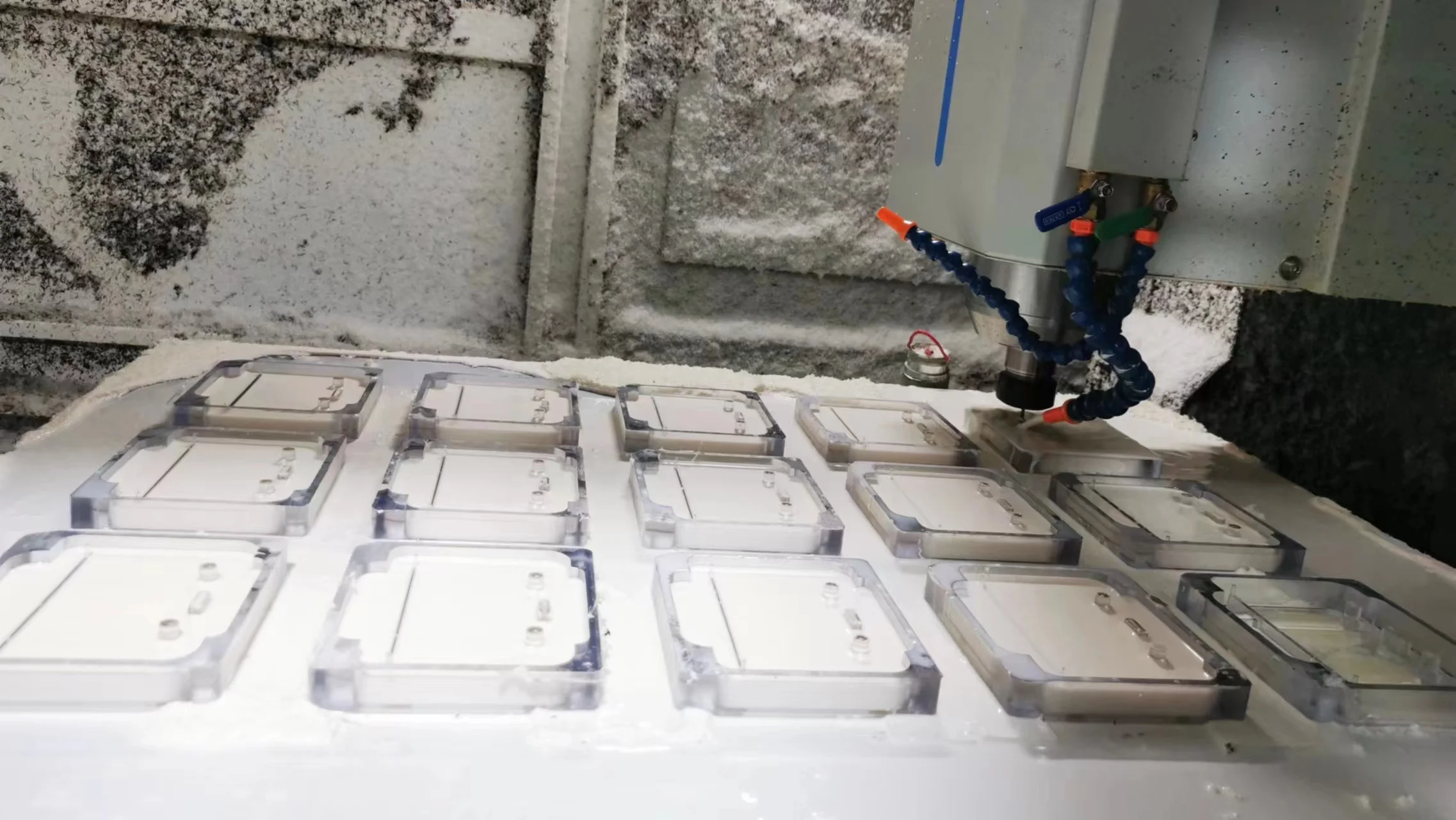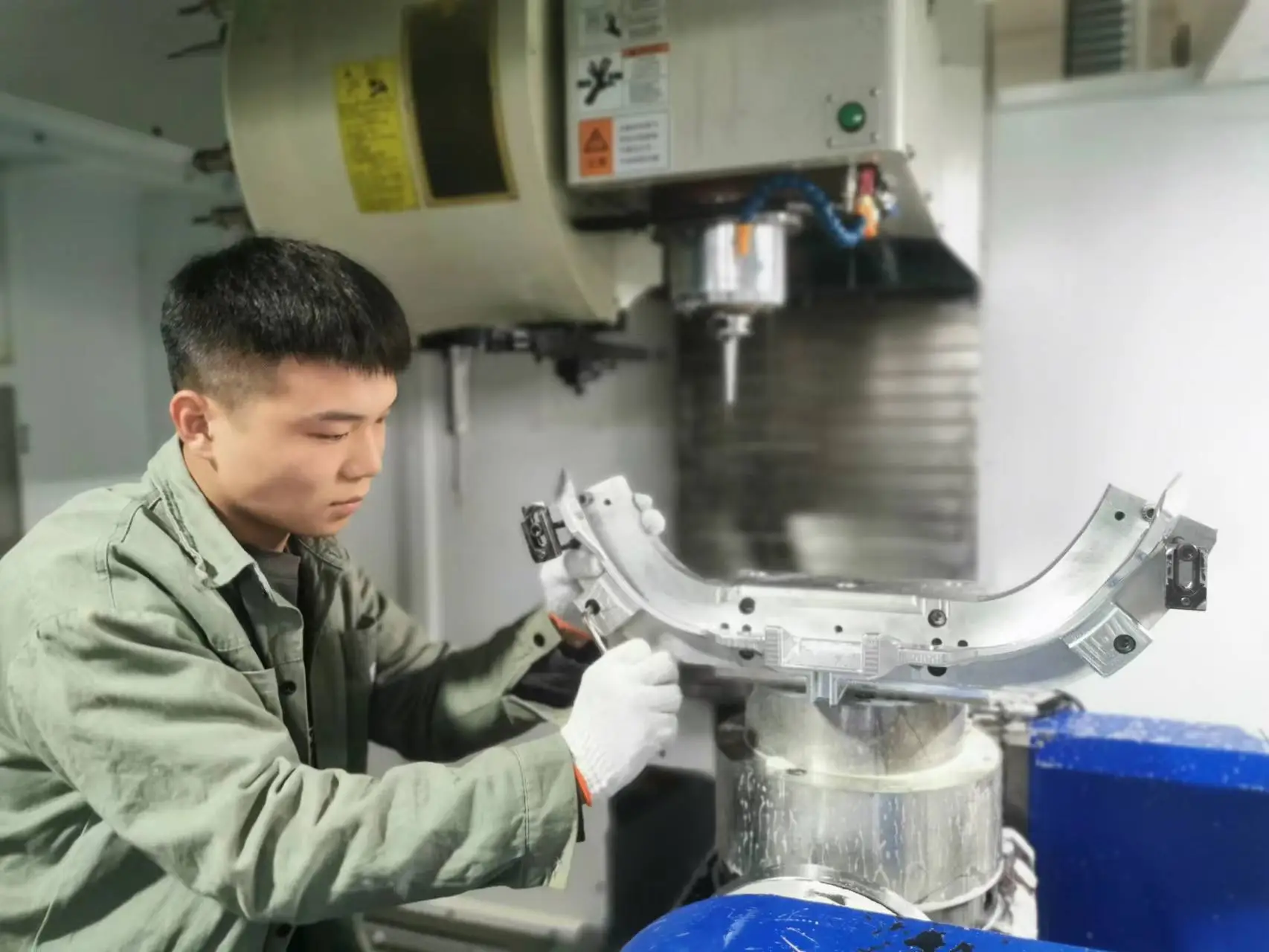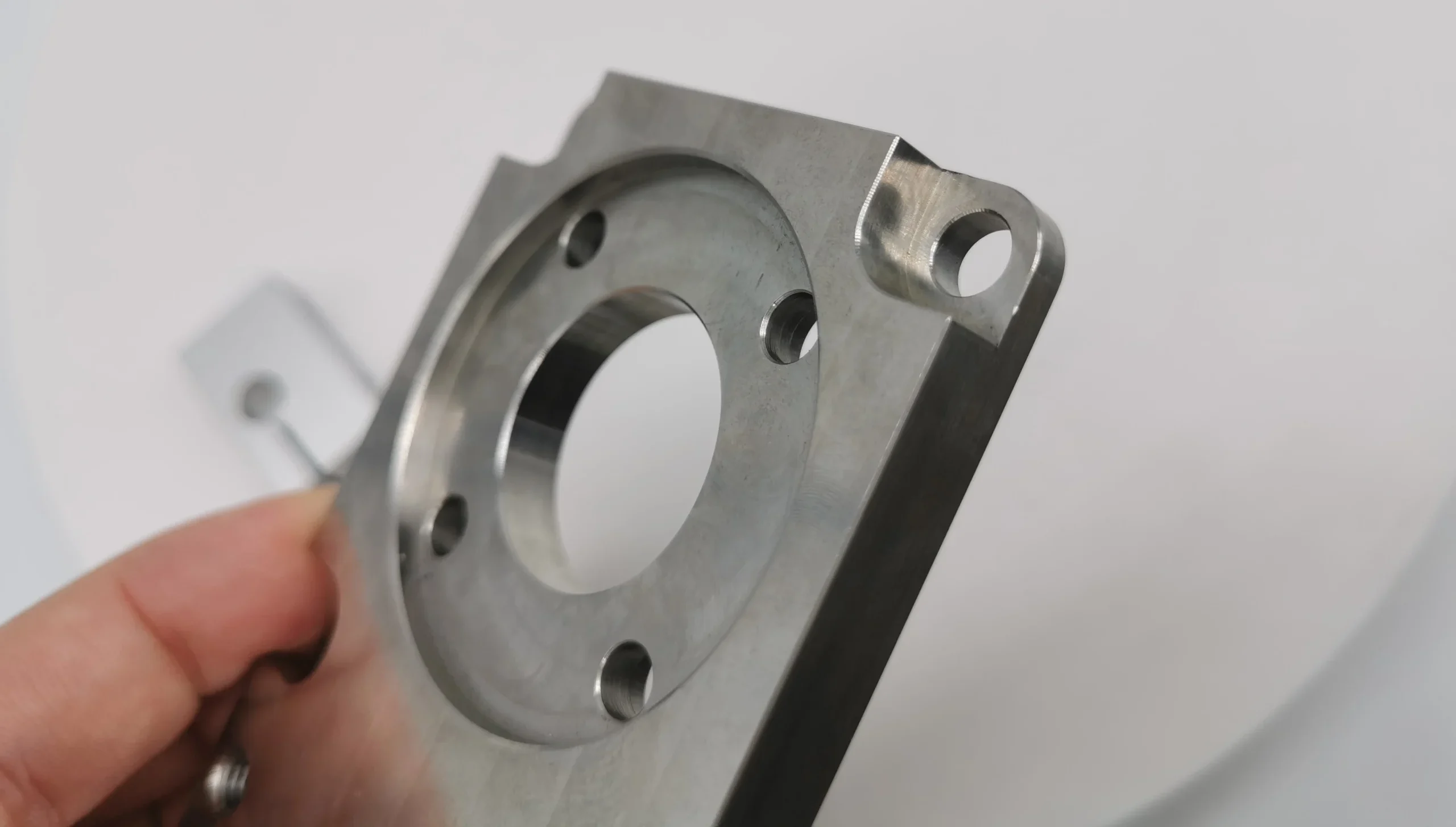- Capabilities
-

CNC Machining
Tight tolerance and 20+ finishes 3, 4 , 5 axis, as fast as 2 days -

Sheet Metal Fabrication
High-precision, on-demand sheet metal cutting and bending. -

3D Printing
SLA, SLS,MJF,SLM, FDM 3d printing with post treatment. -

Vacuum Casting
Production quality parts without the tooling investment.
-
- Solutions

Rapid Prototyping
Fastest lead time of high-quality prototypes at minimal cost.

Low Volume Production
From one-off prototyping to low-volume production.

Mechanical Assembly
Custom assembly for project-specific needs.

Custom Package
Ready to help you prompt your brand.
- Sources

Materials
Select from 100 more types of metals and plastics.

Finishes
Select from 20 more types of surface fishes.

Industries
Providing precision machining and manufacturing solutions.

Cases
How we assist our clients in bringing their projects to fruition.
- Company

Quality Assurance
Consistent quality, every time.

About Us
Your go-to manufacturer for custom parts.

Newsroom
Learn updated news about ECOREPRAP.
Which country is best for CNC machining?
Updated: December 19, 2023
Table of Contents
- 1. What is CNC machining?
- 2. CNC machining history
- 3. CNC machining considerations-Cost
- 4. CNC machining considerations-Quality
- 5. CNC machining considerations-Lead Time
- 6. CNC machining considerations-Communication
- 7. 7.Countries known for CNC machining
- 8. Reliable CNC machining solutions in china – ECOREPRAP
- 9. FAQs
China is the best country for CNC machining considering cost, precision, logistic and other factors. Though determining the optimal choice between localized and global CNC machining can be challenging for each CNC machining projects, statistical data suggests that China emerges as the premier destination for CNC machining. Let’s delve into this blog to gain insights into why China is widely regarded as the best in CNC machining.
1. What is CNC machining?
CNC machining, short for computer numerical control, is a subtractive production process using computerized controls and machine tools to selectively remove material from a stock piece, commonly known as the blank or workpiece, to produce custom-designed parts. CNC machining is applicable to a diverse range of materials, including metals, plastics, wood, glass, foam, and composites.
It is widely used in various industries, including automotive, telecommunication, medical, and others. From prototypes to low-volume production, and large-scale production, CNC machining is always used when precise tolerance is required.
In CNC machining process, pre-programmed software and code dictate the movements of production equipment. CNC machining exercises control over an array of intricate machinery, including grinders, lathes, and turning mills, all of which are instrumental in cutting, shaping, and fabricating various parts and prototypes.
CNC machinists blend elements of mechanical design, technical drawings, mathematics, and computer programming skills to transform raw materials, such as a sheet of metal, into critical components for applications like aerospace or automotive manufacturing.

2. CNCmachining history
In 1751, turning machines appeared. The machine used to replace handcrafted techniques and increase precision. But the CNC concept was brought up hundred of years later.
In 1949, the first numerical control concept was developed. John t. Parsons, an early computing pioneer, developed it as part of an air force research project carried out at the massachusetts institute of technology (mit). They made an experimental milling machine to produce helicopter blades and stiffer skins for aircraft by using motorized axes.
In 1952, the idea was further developed. Richard kegg (in collaboration with mit) introduced the cincinnati hydro-tel, a 28-inch vertical-spindle contour milling machine. He was patented for a “motor controlled apparatus with positioning machine tool.” The initial prototype, although it was operated using eight-column paper tape, a tape reader, and a vacuum-tube electronic control system, became a focus for future developments.
In the 1940s and 1950s,early CNC machines used punched tape, which was then commonly used in telecommunications and data storage, which was replaced by analog computing technologies later.
From the 1960s into the 1970s, digital technologies emerged, making the production process automated and more efficient.
In 1968, parsons was awarded for his early work and received the first joseph marie jacquard memorial award from the numerical control society.
In 1975the society of manufacturing engineers awarded him an honorary plaque, which named parsons “the father of the second industrial revolution.”
John t. Parsons, is called as the “Father of numerical control”.

3. CNC machining considerations-Cost
When considering CNC machining services, the following factors shall be taken into consideration.
Below are the important factors influencing CNC machining costs.
3.1. Material costs:
The type of material used significantly impacts costs. Different metals, plastics, or composite materials have varying prices.
3.2 Machining time:
CNC machining costs often correlate with the time a machine is operational. Longer machining times result in higher costs. Machining time can be reduced by optimizing tool paths through programming.
3.3 Labor costs:
Skilled labor is essential for programming and operating CNC machines. Labor costs contribute to the overall expenses.
3.4 Tooling costs:
Specialized tools are often required for different CNC machining processes. Tooling costs include the purchase, maintenance, and replacement of these tools.
3.5 Complexity of design:
Complex designs or intricate geometries may require more time and precision, affecting overall costs.
3.6 Tolerance and quality requirements:
Tighter tolerances and higher quality standards may necessitate additional time and meticulous attention, influencing costs.
3.7 Quantity of parts:
Economies of scale often apply in CNC machining. Producing larger quantities of parts can result in lower per-unit costs.
3.8 Material wastage:
The efficiency of material usage affects costs. Minimizing material wastage is crucial for cost-effective CNC machining.
3.9 Setup and programming:
Initial setup and programming costs are incurred at the beginning of a CNC machining project. For small runs, these costs may contribute significantly to the overall expenses.
3.10 Machine capabilities:
Different CNC machines have varying capabilities. Advanced machines with multiple axes or high-speed capabilities may come with higher operational costs.
3.11 Finishing processes:
Additional finishing processes, such as coating or polishing, can add to the overall CNC machining costs.
3.12 Location of the CNC machining service:
Costs can vary based on the geographical location of the CNC machining service provider due to differences in labor rates and overhead expenses.

4. CNC machining considerations-Quality
CNC machining quality is a critical aspect that directly influences the performance and reliability of manufactured parts. Achieving high-quality CNC machining involves several key factors:
4.1 Material selection:
4.2 Programming accuracy:
Accurate and error-free CNC programs are necessary for achieving the intended design specifications. Programming errors can lead to defects and compromise quality.
4.3 Operator skill and training:
Skilled CNC machine operators play a crucial role in maintaining quality. Proper training ensures that operators understand the intricacies of the machining process and can address issues promptly.
Proper material handling and secure workholding are essential to prevent vibrations, deflection, or inaccuracies during the machining process. Well trained operators knows how to handle the materials properly.
4.4 Machine calibration and tool quality and maintenance:
Properly calibrated machines ensure consistent and precise machining. High-quality cutting tools, regularly maintained and replaced as needed, are crucial for achieving precise and clean cuts.
4.5 Surface finish:
The surface finish of machined parts is a visual indicator of quality. Proper tool selection, machining parameters, and finishing processes contribute to achieving the desired surface finish.
4.6 Inspection and quality control:
Rigorous inspection processes and quality control measures are essential at various stages of CNC machining. This includes both in-process and final inspections to identify and rectify any deviations from specifications.
Setting high standards and specifications can ensure the final products meet recognized quality benchmarks, which must be closely adhered to, to achieve higher quality parts.
4.7 Feedback loops:
Implementing feedback loops and continuous improvement processes based on inspection results contributes to ongoing quality enhancement.
4.8 documentation and traceability:
Comprehensive documentation of the machining process, including materials used and machining parameters, aids in traceability and quality assurance.

5. CNC machining considerations-Lead Time
When we talk about CNC machining lead time, we shall consider the following two.
5.1 Production time
From material purchase time, programming time, to quality check time, every segment shall be considered. For each CNC machining project, a project schedule shall be arranged once the order is placed to make sure the parts are machined with promised lead time. Coordination among different stages also contribute to minimize the lead time.
5.2 Shipping time
For local CNC machining shops, the shipping time is only about 1 to 2 days at a relatively cost. But outsource CNC machining shops overseas, the shipping time is about 3 to 10 days by air and by sea, it may takes about 15 to 45 days.
6. CNC machining considerations-Communication
Speaking a common language makes communication easier in CNC machining. Notably, English has become an international language. In both Chinese and Japanese CNC machining facilities, reputable factories often have customer managers proficient in both spoken and written English, rendering language barriers less of a concern.
Global collaborations in CNC machining often involve teams located in different time zones. Managing time zone differences is crucial for maintaining efficient communication and project coordination.
7. Countries are known for CNC machining
China, Germany, Japan, and the United States are CNC machining well-known countries with different strengths. See a brief introduction in the table below.
Country | Advantages | Considerations |
China | Cost-effective production Diverse manufacturing capabilities Rapid prototyping | Communication challenges Quality assurance |
Japan | High precision and quality Advanced technology | Higher costs Smaller-scale production |
Germany | Precision engineering High-quality materials | Higher cost Longer lead time |
United states | Technological innovation Better communication | Higher cost |
Japan CNC machining cons and pros
Japanese CNC machining is known for high precision and high-quality output with cutting-edge CNC machinery and forefront CNC technology. However, the machining cost is relatively high and more suitable for smaller-scale, high-precision production.
Germany CNC machining cons and pros
Like Japan, German CNC machining is renowned for precision engineering and adherence to strict quality standards. Also, the German market always uses high-quality materials. Due to high precision and high-quality material, the cost is high, and the lead time is much longer.
United States CNC machining cons and pros
In the USA, English is the primary language of communication. The USA also has advanced CNC machining technology. However, the cost is also very high.
China CNC machining cons and pros
Due to lower labor costs and rent, the CNC machining cost is low compared with the above 3 countries. Conservatively estimated, china has tens of thousands of CNC machining factories of varying sizes. Some are good at high precision parts, some are good at rapid prototyping, some are good at low volume production, and some are good at large scale. When cooperating with China CNC machining manufactures, careful supplier selection is crucial.
Considering the CNC machining cost, production capabilities, lead time, and shipping, china is the best country for CNC machining, especially for rapid prototypes, fast turnaround CNC machining, low-volume production, and large-scale production projects with no tightest tolerance requirements.

8. Reliable CNCmachining solutions in china – ECOREPRAP
Regarding CNC machining, china is undoubtedly a top choice, but the key lies in selecting the right supplier.
Why ECOREPRAP is your premier choice:
8.1. Wide machining capacities:
ECOREPRAP has different CNC machining services, including 3-axis, 4-axis, and 5-axis machining, CNC lathing, CNC turning, CNC routing, and milling-turning. Both metal and plastic machining are available, such as aluminum, stainless steel, copper, acrylic, polycarbonate, pom, and more.
Choose from over 20 surface finishes, including anodizing, plating, powder coating, spray painting, and more.
In addition to CNC machining, ECOREPRAP provides sheet metal fabrication, 3d printing, and assembly services, making us your all-in-one solution for machining projects.
8.2. Higher standards:
ECOREPRAP sets elevated standards for machining, ensuring that the parts you receive meet and exceed your expectations. Check our standards here.
8.3. Faster shipment:
Collaborating with DHL, ECOREPRAP guarantees international logistics within an impressive 3 to 5 days. Your projects move swiftly from production to your doorstep.
8.4. Effective communication:
Our project managers at ECOREPRAP are not just fluent in English; they have also undergone extensive workshops, internships, and training in our workshop for over six months. This ensures seamless and efficient communication throughout your project.
8.5. Convenient timing:
Considering the time difference between Europe, the United States, and China, ECOREPRAP has implemented both early and middle shifts. This strategic scheduling ensures our customer managers are available during your working hours.
Send us your project details and experience the reliability, precision, and efficiency that sets ECOREPRAP apart in the world of CNC machining. Your satisfaction is our priority.
Take the next step in your machining project – contact ECOREPRAP today!
9. FAQs
9.1 Where are the CNC machining manufacturers located in China?
There are many cities in China that have many CNC machining factories, for example, Shenzhen, Dongguan, Guangzhou, Suzhou, Shanghai, Ningbo, Xiamen. Among them, Shenzhen is known as China’s Silicon Valley, a hub for technology and manufacturing, including CNC machining.
9.2 What are the benefits of choosing Shenzhen CNC machining services?
Shenzhen’s reputation for rapid prototyping ensures swift development cycles, while the cost-effectiveness of manufacturing services remains competitive.

Let's get your projects started, together!
Get custom parts machined in high quality, delivery on time.






